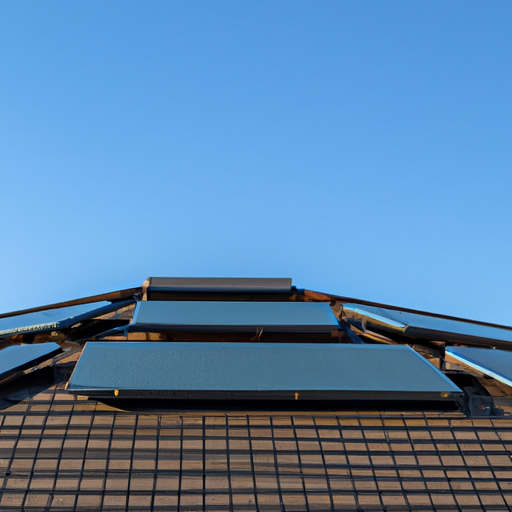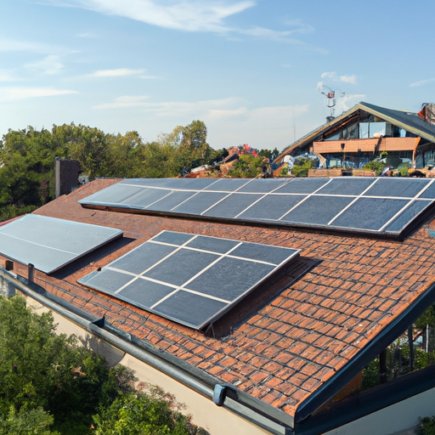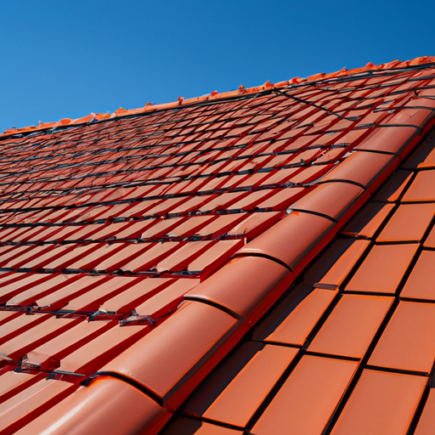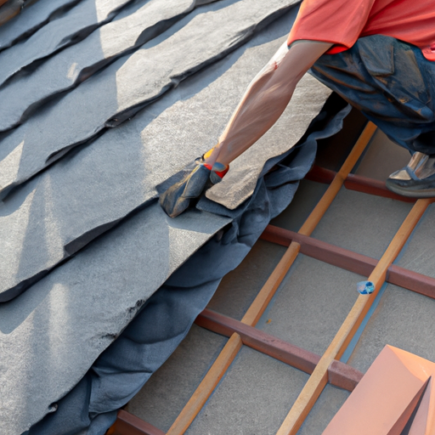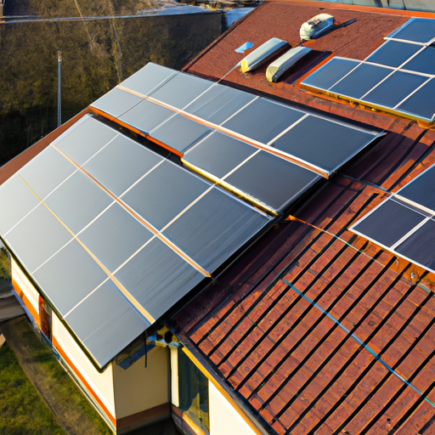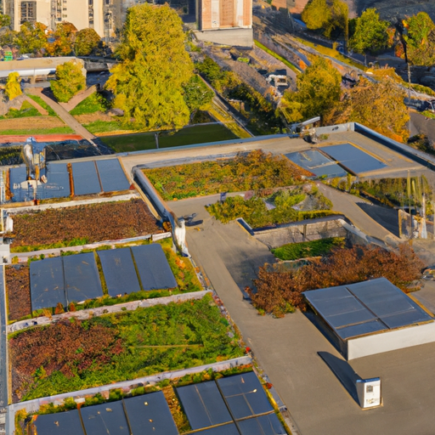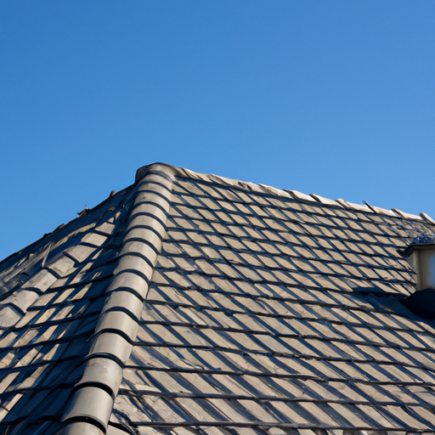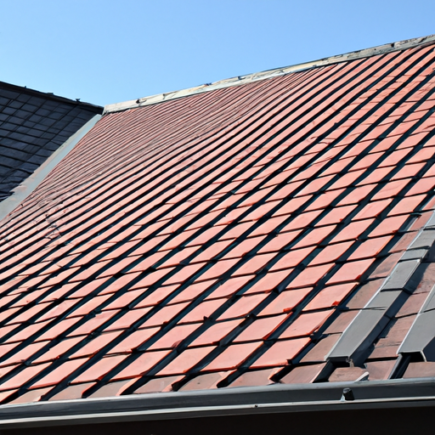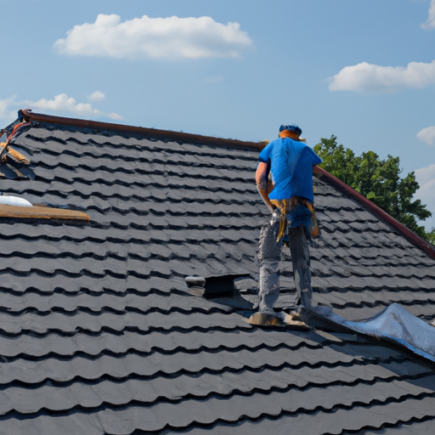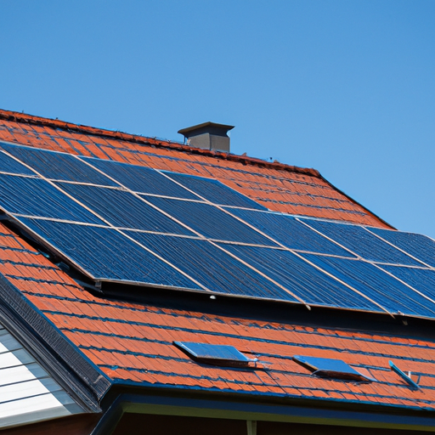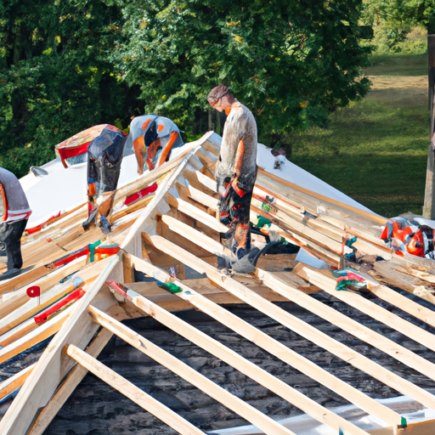can be installed on the roof to generate electricity from sunlight, reducing the reliance on fossil fuels and lowering energy bills. Another sustainable roofing option is green roofs, which involve the installation of vegetation on top of a waterproofing membrane. Green roofs provide insulation, improve air quality, and help manage stormwater. Metal roofs are also a sustainable choice as they are made from recycled materials and have a longer lifespan than traditional options. Lastly, wood shingles made from sustainably harvested materials provide a traditional aesthetic, natural insulation, and reduced energy consumption. By choosing these eco-friendly roofing alternatives, we can contribute to a greener and more sustainable future.
The Benefits of Synthetic Roofing Materials: Rubber, PVC, and TPO
also lowers energy expenses for the building owner. PVC roofs are also waterproof, resistant to bacteria and fungi growth, and have a long lifespan. They are lightweight and easy to install, making them suitable for a variety of construction projects.
TPO roofing is another synthetic option that offers a range of benefits. TPO roofs have excellent weather resistance, withstanding strong winds, hail, and extreme temperatures. They are also highly durable and resistant to punctures, tears, and impact damage. TPO roofing is known for its energy efficiency, providing insulation and reducing heating and cooling costs. These roofs are also environmentally friendly, as they can be fully recycled at the end of their lifespan.
In summary, synthetic roofing materials such as rubber, PVC, and TPO offer numerous advantages over traditional options. From durability and low maintenance requirements to energy efficiency and environmental sustainability, these materials provide a cost-effective and reliable roofing solution. Consider using rubber, PVC, or TPO for your next roofing project and enjoy the benefits they bring.
The Secrets Behind Successful Roof Construction: Tips and Best Practices
Proper roof design is crucial for ensuring the longevity, durability, and overall performance of a building. Factors such as climate, building usage, structural integrity, aesthetics, and energy efficiency must be considered. Different climates require specific materials, slope angles, and insulation. The intended use of the building will determine additional features needed, such as skylights for residential properties or HVAC systems for commercial facilities. Structural integrity is essential for supporting the roof’s weight and any additional loads. Aesthetics play a significant role in complementing the building’s architectural style. Lastly, energy efficiency is important for reducing costs and minimizing the building’s carbon footprint. Overall, considering these key factors and following best practices will lead to successful roof construction projects.
The Evolution of Roof Construction: From Traditional Methods to Modern Innovations
Traditional roof construction methods have a rich history, with different techniques used throughout ancient civilizations. The Egyptians utilized a post and lintel construction method, while Greece and Rome predominantly employed the truss system. In the Middle Ages, timber frame construction became prevalent in Europe, with roofs covered in thatch or wooden shingles. The Industrial Revolution brought advancements such as iron and steel, leading to stronger roofs. In recent decades, lightweight materials and innovative techniques have revolutionized roof construction, incorporating sustainability and energy efficiency. The evolution of roof construction demonstrates continuous improvement and human ingenuity.
Innovative Roof Construction Techniques: Modern Solutions for Today’s Builders
Roof construction techniques have significantly advanced in recent years, offering innovative solutions for today’s builders. The focus on energy efficiency and environmental sustainability has driven the adoption of eco-friendly options such as solar panels and green roofs. Integrating solar panels into the roof allows for clean energy generation without compromising the building’s aesthetics. Green roofs, covered with vegetation, contribute to stormwater reduction, insulation, and improved air quality. Furthermore, advancements in lightweight and durable materials, like engineered trusses and prefabricated roof panels, have made construction faster and more efficient. Advanced membranes and coatings enhance waterproofing capabilities and minimize water damage. Embracing these modern solutions not only fulfills the current demands of the industry but also contributes to a greener and more sustainable future.
A Comprehensive Guide to Roof Construction: Materials, Techniques, and Maintenance
Introduction to Roof Construction: Exploring the Materials and Techniques is an informative article that highlights the importance of choosing the right materials and construction techniques for a durable and effective roof. It discusses the most commonly used roofing materials such as asphalt shingles, metal roofing, clay tiles, and slate, and highlights their unique features and considerations. The article also delves into the construction techniques involved, including framing, underlayment, flashing, and ventilation, which play a crucial role in the longevity and performance of a roof. Additionally, the article emphasizes the significance of regular maintenance and inspections to ensure the roof’s continued functionality. Overall, this article provides valuable insights for anyone undertaking a roofing project or seeking to understand more about roof construction.
The Importance of Proper Roof Construction Techniques: Ensuring Strength and Longevity
Understanding the fundamentals of proper roof construction is crucial for ensuring the strength and longevity of a building’s roof. Roof construction techniques play a vital role in protecting a structure from external elements, and by implementing the right techniques, homeowners and building owners can prevent costly repairs and extend the lifespan of their roofs. Key elements of proper roof construction include structural integrity, proper ventilation, waterproofing, and choosing appropriate roof covering materials. Engaging professional roofing contractors who are well-versed in proper roof construction techniques is also crucial. By understanding these key elements and utilizing quality materials, homeowners and building owners can enjoy the benefits of a reliable and durable roof for years to come.
The Complete Guide to Roof Construction: Everything You Need to Know
When it comes to building or renovating a house, understanding the basics of roof construction is essential. The roof is not only a protective barrier against the elements but also plays a significant role in the overall aesthetic appeal of the structure. In this guide, we will provide you with a comprehensive overview of the key aspects of roof construction. One of the first considerations in roof construction is the choice of materials. There are various options available, including asphalt shingles, metal roofing, clay tiles, and concrete tiles. Each material has its unique characteristics, such as durability, cost, and visual appeal. It is crucial to choose a material that aligns with your preferences, budget, and architectural style. The next crucial aspect of roof construction is the roof’s shape, often referred to as the design or style. The most common roof styles include gable, hip, flat, and shed roofs. The roof’s shape not only affects the visual appeal but also impacts factors such as drainage, insulation, and attic space. It is essential to consider the climate and local building codes when selecting a roof style. Roof trusses or rafters are essentially the framework supporting the roof. Trusses are pre-fabricated triangular structures made of wood or metal, while rafters are traditionally cut and assembled on-site. The choice between trusses and rafters depends on various factors, including cost, structural requirements, and ease of installation. Both options have their advantages and can be engineered to accommodate specific roof designs. Another critical aspect of roof construction is the underlayment. The underlayment acts as a waterproofing layer, protecting the roof from leaks caused by rain or melting snow. Common types of underlayment include asphalt-saturated felt, synthetic materials, and rubberized asphalt. The underlayment is typically installed before the final roof covering to provide an additional layer of protection. Ventilation is a crucial consideration in roof construction. Adequate ventilation helps to regulate temperature and moisture levels in the attic space, preventing condensation and reducing the risk of mold and rot. Ventilation systems can include ridge vents, soffit vents, gable vents, and powered exhaust fans. Proper ventilation is essential for the longevity of the roof and the overall comfort of the occupants. Last but not least, proper installation and maintenance are vital for a durable and reliable roof. Hiring a professional roofing contractor with experience in roof construction is highly recommended. Regular inspections and maintenance, such as replacing damaged shingles or repairing leaks promptly, can extend the lifespan of your roof and prevent costly repairs down the line. In conclusion, understanding the basics of roof construction is essential for anyone involved in building or renovating a house. From choosing the right materials and roof style to considering the framework and ventilation, every aspect plays a vital role in ensuring a functional, durable, and aesthetically pleasing roof. By following the guidelines and investing in professional installation and maintenance, you can enjoy a secure and beautiful roof for years.
A Comprehensive Guide to Roof Construction: Materials, Techniques, and Considerations
When it comes to roof construction, it is essential to choose the right materials and techniques to ensure a durable and long-lasting roof. This article provides a comprehensive overview of roofing materials, including asphalt shingles, metal roofing, clay tiles, and slate roofing, highlighting their advantages and considerations. Additionally, the article discusses various roofing techniques such as sloped roof construction, flat roof construction, roof trusses, and roof insulation. The importance of considering factors such as climate, budget, and maintenance when planning a roof construction project is also emphasized. Whether you are a homeowner or a contractor, this detailed overview will provide valuable insights to help you make informed decisions for your next roofing project.
Roof Construction: A Comprehensive Guide to Building a Solid and Secure Roof
Building a solid and secure roof is essential for the structural integrity and longevity of any building. The article explains the step-by-step process of roof construction, starting with framing the structure using a truss system. It then discusses the installation of the roof deck, underlayment, and the choice of roofing material based on factors such as climate and budget. Other components such as flashing, vents, and gutters are also highlighted for proper waterproofing and ventilation. The article stresses the importance of consulting with professionals and following local codes and regulations. In conclusion, understanding the basics of roof construction and using the right materials and practices can ensure a durable and safe roof.


